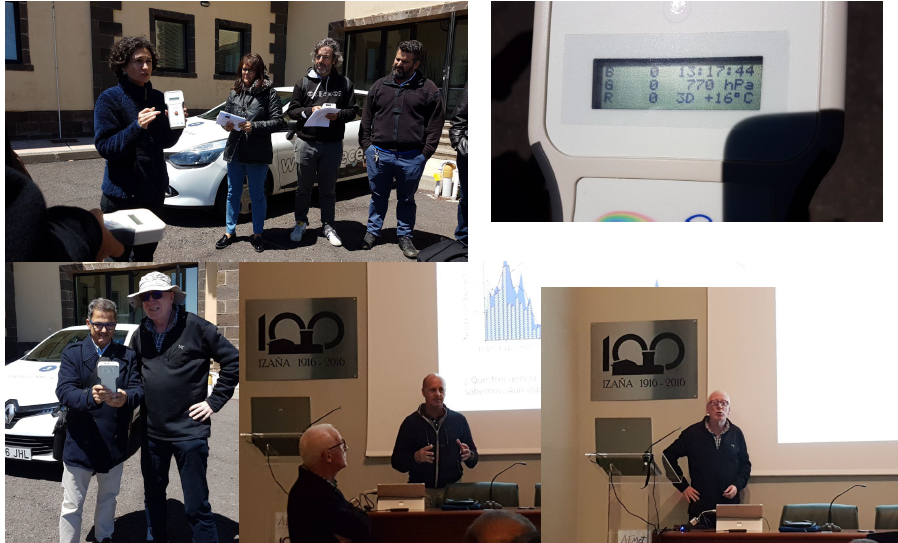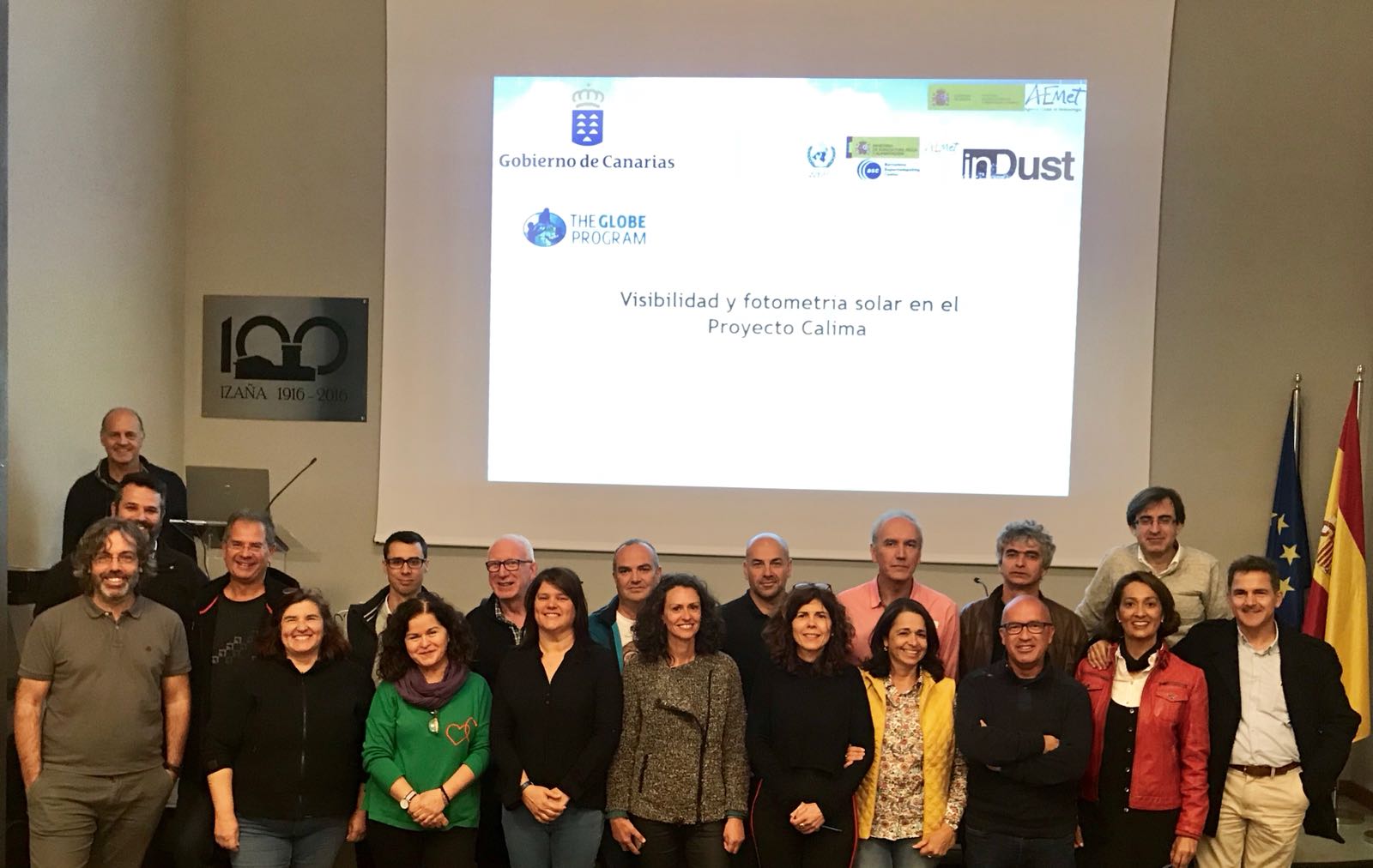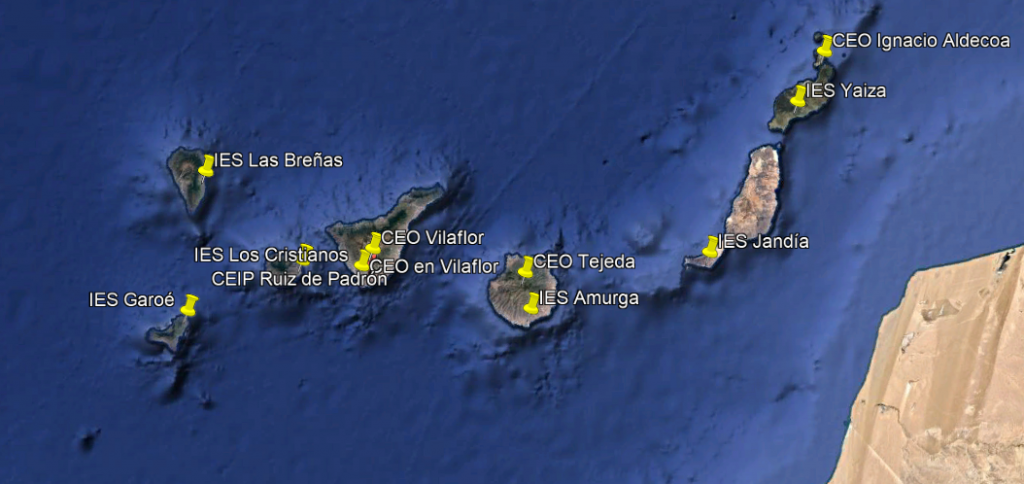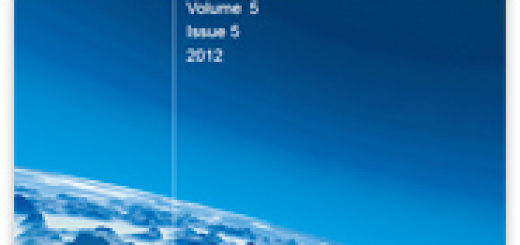Clima project: collaboration between the Investigation and Research Center of Izaña and the Ministry of Education and Universities of the Canary Islands Government within the Globe programme
The Ministry of Education and Universities of the Canary Islands Government and the AEMET’s Izana Atmospheric Research Center (IARC) have initiated a joint project to raise awareness of the problem of airborne dust and its impacts on health and the environment throughout the educational community. This project, called “Calima”, complements another initiative of the Ministry of Education and Universities, the Clima project. “Calima” project includes the pioneering use of remote sensing instruments, and specifically low cost sun photometers designed and produced for the GLOBE (Global Learning and Observation to Benefit the Environment) project. These photometers are Calitoo models, manufactured by Tenum. The Canary Islands Government has purchased 10 of these photometers which have been calibrated and checked at the Izaña Observatory (AEMET).

Calitoo hand photometer model used in the Calima Project.
The secondary schools that have joined the project will routinely measure the content of airborne particles (aerosol optical depth, AOD) using low-cost radiometers. They will send their results to a centralised base that will be used by AEMET, and specifically by the WMO Sand and Dust Storm Warning Advisory and Assessment System (SDS-WAS) for North Africa, Middle East and Europe, managed by AEMET and by Barcelona Supercomputing Centre.
At the same time, AEMET will provide AOD forecast information for each and every one of the secondary schools that participate in the Calima project, as well as the aerosols data obtained from the satellite, so students can practice comparing their data with the atmospheric dust forecast.
In order to know the details of the project and to be trained in the use of this technology, a group of teachers from the eight Canary Islands participated last week in a Workshop on the use of low-cost sun-photometers that was carried out at the Izaña observatory.

Photos of the workshop held at the Izaña Observatory.

Photos of the workshop held at the Izaña Observatory.

Group photo with all the participants of the workshop on atmospheric dust and use of Calitoo photometers.
The 10 instruments that constitute the Calima Project network will be used in the secondary schools listed below (locations indicated in the map):
• El Hierro – IES Garoe.
• La Gomera – CEIP Ruiz de Padrón.
• La Palma – IES Las Breñas.
• Fuerteventura – IES Jandía.
• Lanzarote – IES Yaiza.
• La Graciosa – CEO Ignacio Aldecoa.
• Gran Canaria – CEO Tejeda and IES Amurga.
• Tenerife- IES Los Cristianos and CEO at Vilaflor.

Location of the educational centres participating in the project with Carlitoo instrumentation.
The photometers are located so they completely cover the Canary archipelago. There will be two photometers in both Tenerife and Gran Canaria islands. One will operate in the coast and another one in the high areas.
These activities are financed by the Ministry of Education and Universities of the Canary Islands Government, with the assessing and support of AEMET through the Izaña Atmospheric Research Centre. Also, they are partially supported by the Global Learning and Observation to Benefit the Environment (GLOBE) program,InDust COST Action and WMO Sand and Dust Storm – Warning Advisory and Assessment System (SDS-WAS).
Translated by Yaiza Aguilar, ULL trainee student; supervised by IARC staff.







